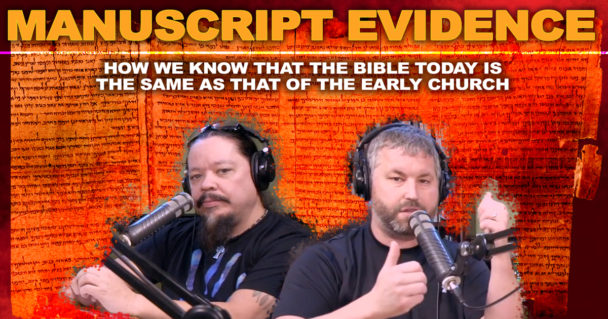
Topic Notes
EXTANT: still existing: not destroyed or lost (Merriam-Webster)
When looking at the validity of current texts that are copies of an ancient one, it is important to look at the number of early extant manuscripts. It is extremely rare that the original ancient manuscript is available for comparison, so the time gap between an available manuscript and the original becomes important.
Extant Manuscripts of the New Testament
- 5,800 complete or fragmented Greek manuscripts
- 10,000 Latin
- 9,300 other
- This gives a total of over 25,000 manuscript copies or portions of the New Testament.
- These are dated from 100 to 300 years after the originals. There are no original manuscripts but the number and similarity of extant copies allow scholars to reconstruct the originals
Early Fragments
- Bodmer manuscript containing most of John’s gospel 150-200 A.D.;
- Magdalen fragment from Matthew 26 believed by some to be within a few years of Jesus&’; death;
- Gospel fragments found among the Dead Sea Scrolls dated as early as 50 A.D.
Much has been made of the invalidity of the Bible due to the absence of the original manuscripts. But, when making a comparison with other ancient documents, which are accepted as valid copies of the original, the Bible blows them away (available copies versus the originals):
- Pliny (History) – 7 copies – 750 years gap from original
- Caesar (History) – 10 copies – 1000 year gap from original
- Tacitus (Greek History)– 20 copies – 1000 year gap from original
- Plato (Philosopher) – 20 copies – 1200 year gap from original
- Herodotus (History) – 8 copies – 1300 year gap from original
- Aristotle (Philosopher) – 5 copies – 1400 year gap from original
Quotations from Early Church Fathers:
Even in the absence of manuscripts, the Bible stands out. Many of the Church Fathers used scripture in their writings, adding even more weight to the idea that the manuscripts we DO have are excellent copies of the original.
- Clement of Rome (a disciple of the apostles) cited Matthew, John, and 1 Corinthians in 95 to 97 A.D. Ignatius (who knew the apostles well) referred to six Pauline Epistles in about 110.
- Polycarp (disciple of the apostle John) quoted from all four Gospels, Acts, and most of Paul's Epistles from 110 to 150.
- Taitian's harmony of the Four Gospels completed in 160 A.D.
- Irenaeus (who apparently heard the apostles) quoted from Matthew, John, Acts, and 1 Corinthians in 160 A.D.
- Of the four Gospels alone, there are 19,368 citations by the church fathers from the late first century on.
- Even if we had no manuscripts, virtually the entire New Testament could be reconstructed from these quotations. This argues powerfully that the Gospels were in existence before the end of the first century, while some eyewitnesses (including John) were still alive.
Primary Source Value
Scholars on both sides of the fence have moved to the view that the entire New Testament was written prior to 70 AD when Jerusalem was destroyed. (Liberal scholar John A. T. Robinson’s book Redating the New Testament. Conservative scholar Kenneth Gentry's book Before Jesusalem Fell).
One of the reasons for their argument for the early date of the New Testament is because there is no mention in the past tense of the destruction of Jerusalem and the temple anywhere in the New Testament, and there is consistent mention of it still standing (even in the book of Revelation).




Leave a Reply